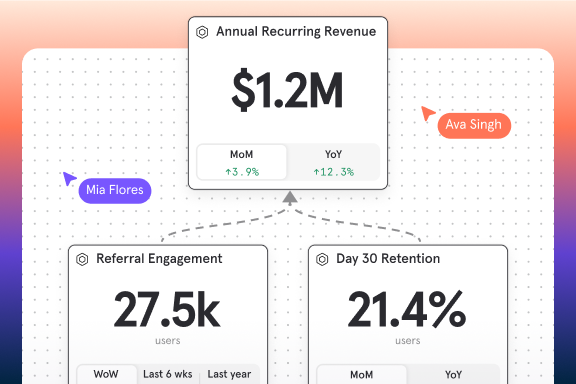How Employment Hero makes faster decisions by marrying quantitative and qualitative product insights with Mixpanel Session Replay
Company
Sydney-based Employment Hero provides HR software for more than 300,000 businesses worldwide and has over 2 million active users on their platform. Companies use Employment Hero to manage every stage of the employee lifecycle, from recruitment and HR to compliance and payroll.
Challenge
As the world’s leading all-in-one HR software, Employment Hero needs reliable access to both quantitative and qualitative product data at scale to innovate and build the best customer experience.
Quantitative data was easy to access with Mixpanel, but qualitative data—understanding why users do what they do—was harder. Filling this gap with individual customer interviews would be impossible to scale, given how time-consuming and difficult it is to schedule interviews.
Employment Hero faced challenges in gaining a holistic understanding of user behavior with their previous setup, relying on separate tools for quantitative analytics and session replays. While Mixpanel provided valuable quantitative trends, and another platform offered session replays, connecting the two was a manual and frustrating process. This fragmented workflow hindered the team’s ability to quickly identify and address user pain points, slowing down product iterations and making it difficult to scale their user research efforts efficiently.
Solution
By adding Mixpanel Session Replay, Employment Hero has consolidated quantitative and qualitative data into Mixpanel. Now, they can track and understand user behavior throughout the entire customer journey and see how individual users interact with their platform without flipping between solutions.
They use those insights to quickly understand how users get value from their platform, optimize conversion funnels, and measure the impact of feature releases.
For instance, the Employment Hero product team identified a bottleneck step where users were not completing a key workflow. Through watching sessions, they quickly realized users were trying to remove an element on the platform but couldn’t find any way to do so. This insight helped the Employment Hero product team prioritize building a trash icon to improve the user experience.
Results
- Saved 8+ hours for each release by eliminating manual user journey data consolidation
- Identified the impact of dozens of product features as they shipped
- Created seamless integration between quantitative and qualitative data sources
- Uncovered opportunities to enhance user experience
Shipping fast is only one piece of the puzzle. There's no value in shipping fast if you can't measure the impact—which is why Mixpanel is the other critical piece you need to build truly great products.Kevin Truong Portfolio Product Manager, Employment Hero
Approach
Employment Hero started using Mixpanel Session Replay in early 2024. Kevin Truong, Portfolio Product Manager, shared his experience using Session Replay to gather qualitative insights at scale.
How does Employment Hero gather product data?
You need both qualitative and quantitative data to build a successful product. For product people, Mixpanel makes it easy to see quantitative data, but getting that qualitative data used to be the hardest part.
Qualitatively understanding the customer journey and what customers are seeing and feeling takes weeks or even months. You have to do a full marketing survey and book interviews with different people, and even with that effort, you will probably only speak to 10 people. It takes a lot of time.
Before Mixpanel Session Replay, how did you attempt to solve this problem?
Session replay is an easier way to qualitatively understand users at scale and bypass the lengthy interview process. Previously, we were using Mixpanel for quantitative product insights and a different tool for session replays. But using separate solutions caused issues because we had to stitch the data together manually. Our other platform didn’t have user IDs, so we couldn’t track individual user journeys. If we wanted to analyze the journey of a particular user who used a feature heavily, we had to stitch together the two platforms for each release, which took a lot of time.
Session replay is a game-changer, providing a middle ground between quantitative and qualitative data.Kevin Truong Portfolio Product Manager, Employment Hero
How much time were you spending stitching data together?
For each release, we would spend about two hours figuring out how to stitch the data together. And after that, doing so for each user took another 15 to 20 minutes. So if we wanted to do it for 20 users, it would take the product owner a day to get everything set up.
If we couldn’t get the insights, we would reach out to the customers directly. But that gets much harder to do as you’re scaling and the number of users grows.
How do you use Session Replay?
We use Session Replay in three main areas. The first one is product-led growth. We want to see where our platform provides value. With Session Replay, we can track which modules customers and prospects are interested in, so we can make informed decisions.
Second, we use it to optimize conversion funnels and uncover opportunities to enhance user experience. For example, we can see that users were distracted by X, Y, and Z, so we removed that distraction and made it easier for them to complete the transaction.
If we see their mouse moving around, they might not be able to find the button they want. One thing that we found out with Session Replays in workflows was that our users didn’t know how to remove an element on the platform. We didn’t have a trash icon, so we added one.
Third, Session Replay allowed us to measure the impact of feature releases. We release 50 features a week, and a lot of those features are beta releases. We use Session Replay to track the usage of those features so product owners can find and address pain points.
What are the benefits of having data in one place?
Unifying both quantitative and qualitative data in one tool gives us the insight we need much faster. It’s significantly easier than having fragmented or distributed platforms.
Additionally, having everything in one place makes onboarding easier. I can create documentation on how to use Mixpanel, and the product teams and new staff members only need to learn one platform. Mixpanel’s intuitive UI and seamless integration of Session Replay make it incredibly easy to adopt. The feature feels like a natural extension of the platform, so there’s very little learning curve for our team.
Finally, as the owner of third-party integrations, having everything in one place makes my life a lot easier. I don’t have to distribute licenses for multiple platforms. We have to conduct third-party risk assessments every six months, and I only need to evaluate one tool instead of two. There’s a lot of overhead I save with Mixpanel Session Replay.
Unifying both quantitative and qualitative data in one place gives us the insight we need. It’s much easier than having fragmented or distributed platforms.Kevin Truong Portfolio Product Manager, Employment Hero
How has Mixpanel enhanced Employment Hero’s data-driven culture?
I don’t think we’ve changed how we would operate based on data because we’ve always been data-driven and data-informed. Mixpanel makes it easy to see our data in one place and then quickly make those important data-based decisions.
Data has always guided our decisions. Mixpanel makes it a lot easier to make data-driven decisions.Kevin Truong Portfolio Product Manager, Employment Hero

